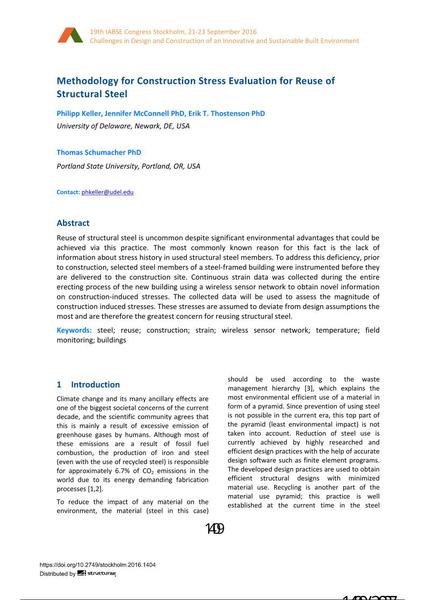Methodology for Construction Stress Evaluation for Reuse of Structural Steel

|
|
|||||||||||
Détails bibliographiques
| Auteur(s): |
Philipp Keller
(University of Delaware, Newark, DE, USA)
Jennifer McConnell (University of Delaware, Newark, DE, USA) Erik Thostenson (University of Delaware, Newark, DE, USA) Thomas Schumacher (Portland State University, Portland, OR, USA) |
||||
|---|---|---|---|---|---|
| Médium: | papier de conférence | ||||
| Langue(s): | anglais | ||||
| Conférence: | IABSE Congress: Challenges in Design and Construction of an Innovative and Sustainable Built Environment, Stockholm, Sweden, 21-23 September 2016 | ||||
| Publié dans: | IABSE Congress Stockholm, 2016 | ||||
|
|||||
| Page(s): | 1409-1416 | ||||
| Nombre total de pages (du PDF): | 8 | ||||
| Année: | 2016 | ||||
| DOI: | 10.2749/stockholm.2016.1404 | ||||
| Abstrait: |
Reuse of structural steel is uncommon despite significant environmental advantages that could be achieved via this practice. The most commonly known reason for this fact is the lack of information about stress history in used structural steel members. To address this deficiency, prior to construction, selected steel members of a steel-framed building were instrumented before they are delivered to the construction site. Continuous strain data was collected during the entire erecting process of the new building using a wireless sensor network to obtain novel information on construction-induced stresses. The collected data will be used to assess the magnitude of construction induced stresses. These stresses are assumed to deviate from design assumptions the most and are therefore the greatest concern for reusing structural steel. |
||||
| Mots-clé: |
acier bâtiment
|
||||
